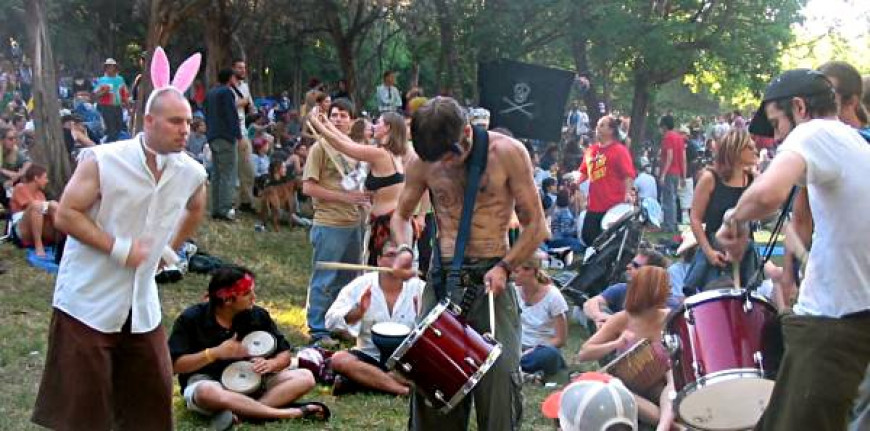What Teaching Style’s Right For You?

Maybe you prefer a teacher like this guy?
Learning is not code; you cannot be programmed to perfection. Sometimes that can be frustrating for musicians trying to improve, but it’s a good thing. Music doesn’t belong on a standardized test, after all. That being said, there are various approaches to teaching. There are military-like instructors, friendly older-sibling types who guide you along, and styles that fall all along the spectrum of possibility.
The eclectic mix of teachers on Lessonface is very indicative of this diversity of thought.
Khabu Doug Young, is one of the most active musicians and teaching artists in the New York City area, as well as a fantastic guitarist, ukulele player, and composer. He focuses on creativity in his teaching.
“Playing music is an exploration; a dynamic, living, breathing journey,” he explained. “It aligns the most subtle inner experiences of the self with all outward relationships--social, environmental, global, and cosmic. My role as a teacher is to assist my students in refining artistic questions, offering guidance through musical forms and techniques, all of which is a very personal matter. All of my suggestions and exercises are based upon the needs of the moment for each individual.”
Khabu rarely uses method books, preferring most often to draw inspiration and direction from the student’s musical interests.
“I draw upon repertoire directly related to the interests of the student, be it a favorite song or 'new' music that will broaden the creative horizons, offering insight on the original questions,” he said. “I emphasize improvisation and composition, not so much as stylistic devices, but to nurture the creative spirit and to build resources and confidence in responding to real-time playing and performance situations.”
Guitarist Brian Barnes, the product of a family filled with musicians, also follows a more “relaxed and supportive” approach, but won’t let technique slide by the wayside: “Things like hand position can make a big difference in the ability to play more difficult pieces as time goes on.”
Marcus Milius, from LA, has a more structured approach to his chromatic and diatonic harmonica classes. He’s worked with Yo-Yo Ma, James Moody, Anthony Wilson, Brian Lynch, Conrad Herwig, and Barbara Streisand, so he knows what he’s talking about. Milius prefers hour-long lessons that utilize instructional materials and play-along mp3s.
Violin instructor Eliza Johnson also follows a more structured path, utilizing Dr. Shinichi Suzuki's teaching philosophy. She also incorporates music reading and theory.
“I typically supplement the Suzuki violin method with music reading,” she said. “Practice does not make perfect, but consistent practice is something that will help both the student and me, as the teacher, to make the most of violin lessons!”
The good news is no matter your needs, there’s a teacher for you. Browse our profiles today and find your match, or, if you’d like, let us help by filling out a quick form here and we’ll connect you with a great instructor on Lessonface.
Click here to book a lesson or here to learn more about how Lessonface works. You can also check out our blog here to read more about Lessonface and our teachers.




